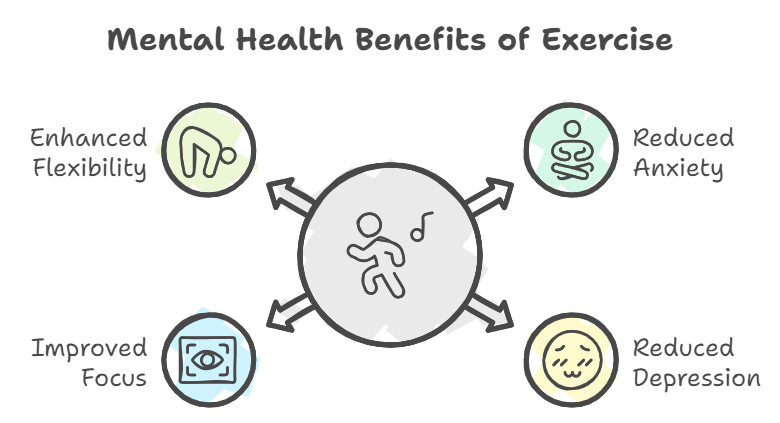For many, the path to a healthier lifestyle starts with a single step—literally. Many people wonder whether to choose walking or running for exercise. Which is better? The answer, like most things in fitness, depends on your goals and circumstances.
“Consistency is key. Whether it’s walking or running, the most important step is the first one.”
Dr. John Doe
Walking or Running: Burning Calories and Shedding Pounds
Many fitness enthusiasts debate whether to run & walk for optimal health, with each offering distinct advantages for weight loss and cardiovascular fitness.
Let’s address the calorie-burning elephant in the room. For those focused on weight management, studies confirm running burns roughly twice the calories as walking.
This makes running a faster way to lose weight. But, you must be consistent and eat a healthy diet. But don’t discount walking just yet. Walking burns calories slower. But, it’s a great, low-impact exercise.
For a 160-pound person, running at 5 mph torches 606 calories per hour. A brisk walk at 3.5 mph burns around 314 calories in the same timeframe. The key is to know how much time you can spend on exercise each week. Then, choose between walking or running for weight loss.
Real-Life Example: Weight Loss Through Walking
Jane, a 45-year-old mother of two, had struggled with weight loss for years. Feeling overwhelmed by high-intensity workout programs, she decided to start with something simpler—walking. Jane began with a 20-minute walk each day, gradually increasing her distance as her fitness improved.
Over the course of a year, she lost 30 pounds, improved her energy levels, and found walking to be a crucial part of her daily routine. Her story is a testament to the power of consistent, low-impact exercise in achieving sustainable weight loss.
Impact on Joints: Walking Gently, Running Intensely
When we compare walking or running in terms of impact on your joints, walking emerges as the clear winner for being gentler on the body. This makes walking ideal for beginners, individuals recovering from injury, or anyone with joint pain.
Unlike running, which involves moments where both feet are off the ground, walking maintains at least one foot planted at all times. This significantly reduces the stress placed on your ankles, knees, and hips.
However, even though running is higher impact, it’s not inherently bad for your joints. Research even shows1 runners tend to have higher bone density.
The crucial thing is gradually increasing intensity and incorporating rest days to allow your body to recover.
Wearing supportive footwear to cushion the impact is also vital for walking or running for weight loss. Listen to your body.
Any persistent pain should never be ignored. Consult with a healthcare professional if you experience discomfort while running.
Mental Benefits: Stress Relief On the Move
Both walking and running boost your mental health. Studies show they reduce anxiety and depression.
Exercise, in any form, promotes the release of endorphins, which have mood-boosting effects. This natural mood lift is incredibly beneficial for improving your mood.
A 2020 review in the International Journal of Environmental Research and Public Health further highlighted the link between running and positive mental health, particularly stress reduction.
Running also boosts blood circulation to the brain2, helping to elevate mood, improve focus, and even enhancing cognitive function as you age.
A short 10-minute run is all it takes to start experiencing these mood-lifting benefits according to a study exploring the impact of moderate-intensity exercise. This means that even if your schedule is packed, you can still fit in a quick run to reap these benefits.
Also, adding Pilates can enhance your walking or running for weight loss. It improves flexibility, core strength, and body balance If you’re curious about how Pilates can enhance your fitness journey, check out our guide on the benefits of Pilates for your health.

Staying Injury-Free
When choosing between walking or running, it’s essential to acknowledge the risk of injuries. Statistics tell us that walkers enjoy a lower injury risk—about 1 to 5 percent3—while runners face a 20 to 70 percent chance of getting sidelined.
This difference is largely due to the high-impact nature of running, which can lead to common running injuries such as plantar fasciitis or Achilles tendonitis.
If you do choose running, minimizing your risk of those common overuse injuries, like stress fractures4 or shin splints, means a gradual progression of your running intensity.
Listening to your body during walking or running for weight loss is essential, especially when you’re pushing your limits or starting a new fitness routine. Incorporating proper warm-up exercises and diversifying your workouts with activities like swimming or cycling can make a big difference in preventing injuries.
If you’re prone to injury or just getting started, walking is an excellent, lower-impact alternative to running. It delivers many of the same fitness benefits but with far less strain on your joints. I’ve found that prioritizing low-impact activities has helped me stay consistent without the constant worry of overdoing it.
While on this journey, I stumbled upon something online that’s been a game-changer for maintaining my fitness routine without the usual aches and pains.
It’s a program that aligns perfectly with the idea of gentle yet effective exercise. If you’re interested, you might want to check GetThin USA too. It’s been really helpful for me, and it could be just what you need to keep your fitness goals on track without the added stress on your body.
Finding the Right Balance Between Run & Walk
Rather than viewing this as an either/or decision, why not embrace walking or running as part of a balanced fitness regimen? Incorporate both.
Maybe a light jog for 25 minutes a few times per week paired with longer brisk walks on alternate days sounds like your perfect balance.
Remember those recommendations from the Mayo Clinic5 about aiming for 150 minutes of moderate exercise or 75 minutes of vigorous exercise weekly? Walking can help you reach those goals while still being gentle on your body.
Listen to your body. If you find a certain activity consistently triggers pain, adjust your walking or running routine accordingly.
Don’t be afraid to seek the advice of a medical professional, like your primary care physician or a physical therapist, to find a movement plan that truly suits your needs.
Walking or running each offer different advantages when it comes to heart health, calorie expenditure, and overall well-being.
Whichever you pick walking or running for weight loss—and whether you do it inside on a treadmill, at the gym, or even outdoors at your local park—consider it your path to feeling great and enhancing your overall health.
Walking short distances can even make a difference in your health.
Frequently Asked Questions
Is it better to run for 30 minutes or walk for an hour?
It’s generally better to tailor exercise type to what your body can sustain comfortably and consistently over time.
Both walking or running for weight loss options offer benefits. A 30-minute run can provide a more vigorous cardio workout, while an hour-long walk allows for a steadier pace and increased calorie expenditure over time. Experiment with both to see what you enjoy and can stick with.
Is walking or running better for weight loss?
Both running and walking offer great weight loss benefits. You’ll burn more calories running in 30 minutes, if you can keep good form. This is better than walking.
But, if you enjoy walking more and can do it for an hour several days per week—go for it. Choose an activity that motivates you to get out there and get active.
Is it better to run or walk to lose belly fat?
You can’t target fat loss from one specific area. A calorie deficit from diet and regular exercise helps to lose weight. Good options for exercise are running and walking. It also reduces stubborn belly fat. Choose an activity that keeps you engaged, challenged, and feeling good.
Conclusion
Walking or running both offer incredible benefits, from weight loss and improved cardiovascular health to mental well-being and injury prevention.
Whether you prefer the low-impact, steady benefits of walking or the more intense calorie burn and fitness boost from running, the important thing is to find what fits best into your life. Listening to your body, starting slow, and building up your endurance are essential steps to long-term success.
If you’re new to exercise, beginning with a walking routine is an excellent choice. Aim for 15-20 minutes a day, five days a week, gradually increasing your time or distance as you feel more comfortable.
Once you’ve established a foundation with walking, consider integrating running intervals to add extra intensity to your workouts. For instance, you might walk for five minutes, then run for one minute, and continue this pattern for 20-30 minutes. As your endurance improves, you can increase the length of your running intervals.
Ultimately, whether you choose walking or running, or a combination of both, the most important step is the one you take today. Lace up your shoes, get outside, and enjoy the benefits of movement. Your body—and mind—will thank you.
Small Step, Big Impact
Start by committing to a 10-minute walk each day this week. Gradually add more time or switch to a light jog as your fitness improves.
Listen to this article
This is an AI generated Podcast version of the article.
- https://www.ncbi.nlm.nih.gov/pmc/articles/PMC6416492[↩]
- https://www.hopkinsmedicine.org/health/wellness-and-prevention/the-truth-behind-runners-high-and-other-mental-benefits-of-running[↩]
- https://www.health.harvard.edu/staying-healthy/walking-your-steps-to-health[↩]
- https://www.webmd.com/a-to-z-guides/stress-fractures-treatment[↩]
- https://www.mayoclinic.org/healthy-lifestyle/fitness/expert-answers/exercise/faq-20057916[↩]



